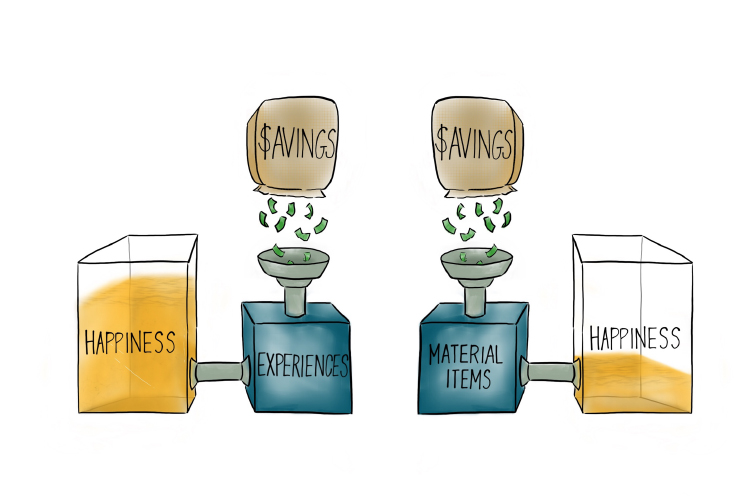
It’s lunchtime and Grant High School’s social hour is in full swing. Carhartt and Supreme — clothing brands whose prices can range from $150 to $1,500 for a box logo item — pop up on students’ hoodies. Camouflage pants inspired by military attire are paired with bulky sneakers that thump against the hallway floors.
In between interactions, friends compliment each others’ clothing and flashy jewelry. Three seconds is all it takes for the shoes we wear to be turned into an assumption about who we are. By third period, our outfits have been so overanalyzed that we are nothing but the money we devote to our material.
The idea that money can’t buy true happiness is nothing new to Grant students. We are told at a young age that money can never buy the kind of happiness that comes from building new relationships and engaging in activities we’re passionate about. Even getting a summer job is seen to be more about the hardworking habits it teaches us than about the financial compensation. As we come of age, we are told that having a great deal of money is pointless without enjoyable experiences.
Name-brand sneakers, backpacks and denim are among some of the most popular trends at Grant, a school which is second only to Lincoln in terms of overall student wealth according to data from Portland Public Schools. Coincidentally, these sought-after clothing trends are also some of the most expensive.
Many students find themselves purchasing pricey brands not just for the hype surrounding it, but the visual aspect as well. “I really like the artwork and designs,” says junior Hixon Sexton-Dorsett, of Supreme. “I’m a designer, and that’s what I want to do for a living … I’m a little into (the hype), but I’m more into the aesthetic.”
U.S. investment bank Piper Jaffray Companies states in its 2015 survey on teenage spending that 20 percent of adolescent spending goes toward clothing, with accessories trailing closely behind. Social events such as concerts and movie showings, however, account for less than 7 percent.
Instagram and Snapchat act as public diaries for teenagers to tell their friends about the good things in their lives: lunch dates with friends and expensive nights out are constantly shown off to followers as a way to represent their fun-filled schedules.
Since these desirable experiences are typically posted about all over social media, why aren’t more Grant students motivated to spend their money on them, as opposed to short term trends?
For one, teenagers constantly feel the pressure to be caught up with current styles in order to stay relevant. Social psychologist Adam Galinsky explains, “Clothes matter, because at (a young) age, you’re unsure of status. And there may not be much else for (teenagers) to base status on.”
At Grant, many teenagers have turned to thrift shopping to decrease the amount they spend on clothes and other items while still being able to obtain the same amount of material.
Senior Cassidy Santella, who buys nearly all her clothing at Goodwill, says she still prefers experiences to materialistic items. “I’d rather spend money on a concert than clothes because I think in the long term … it’s just going to be more fun,” she says.
Thomas Gilovich, a psychology professor at Cornell University, reasons that while material items stay around for a long time, the thrill of owning them goes away in a matter of days or weeks. Experiences have the ability to bring smiles for years to come.
If the positive effect of experience lasts considerably longer than that of material, how are we supposed to get that same happiness from an item? In short, we can’t. Putting excessive amounts of money into materialistic items may very well be limiting our potential happiness.
You shouldn’t stop using money for clothing and material items altogether. In fact, limiting your spending on things you need can actually end up making you less happy. But when it comes to unnecessary materialistic purchases, teenagers should consider new experiences and time with friends and family instead. Even something as simple as attending a school event with a couple friends is bound to be something you value much longer than any accessory.
Being a teenager can be wearying and difficult and reconsidering your spending habits isn’t going to make that go away. However, realizing that material items can’t buy happiness is the first step toward contentment.
Sexton-Dorsett has come to acknowledge that what truly makes him happy is using his money for or with other people. “When I’m given a couple hundred dollars and spend it on myself, (I know) I really could have done something else (with that money),” he says. “Money doesn’t make me happy. What makes me happy is the experiences I use with it.”




